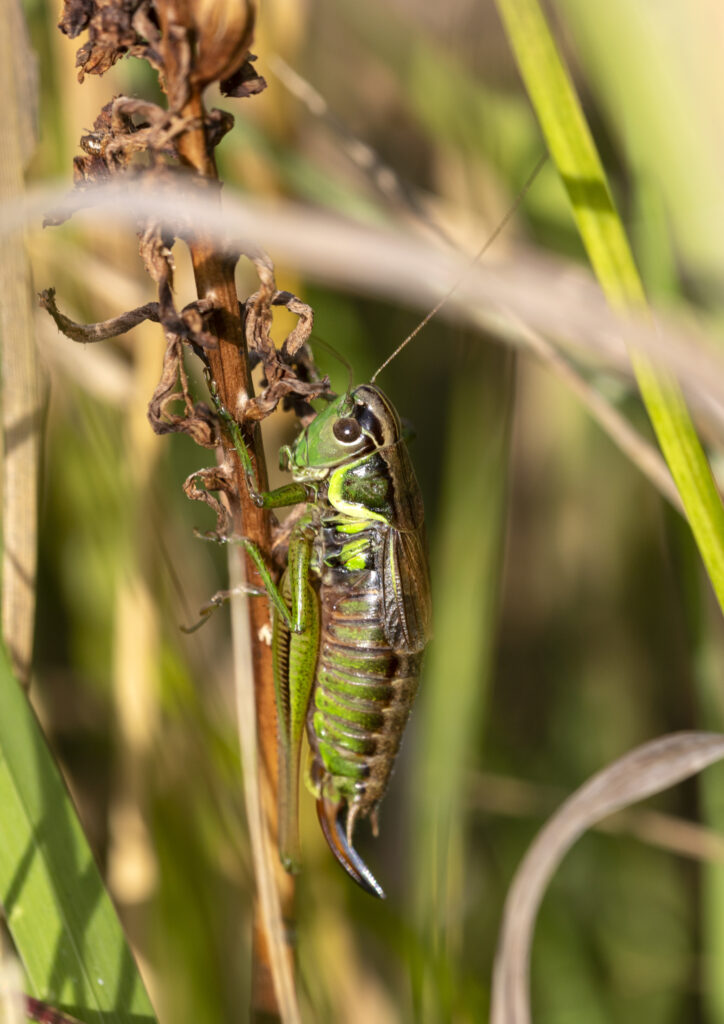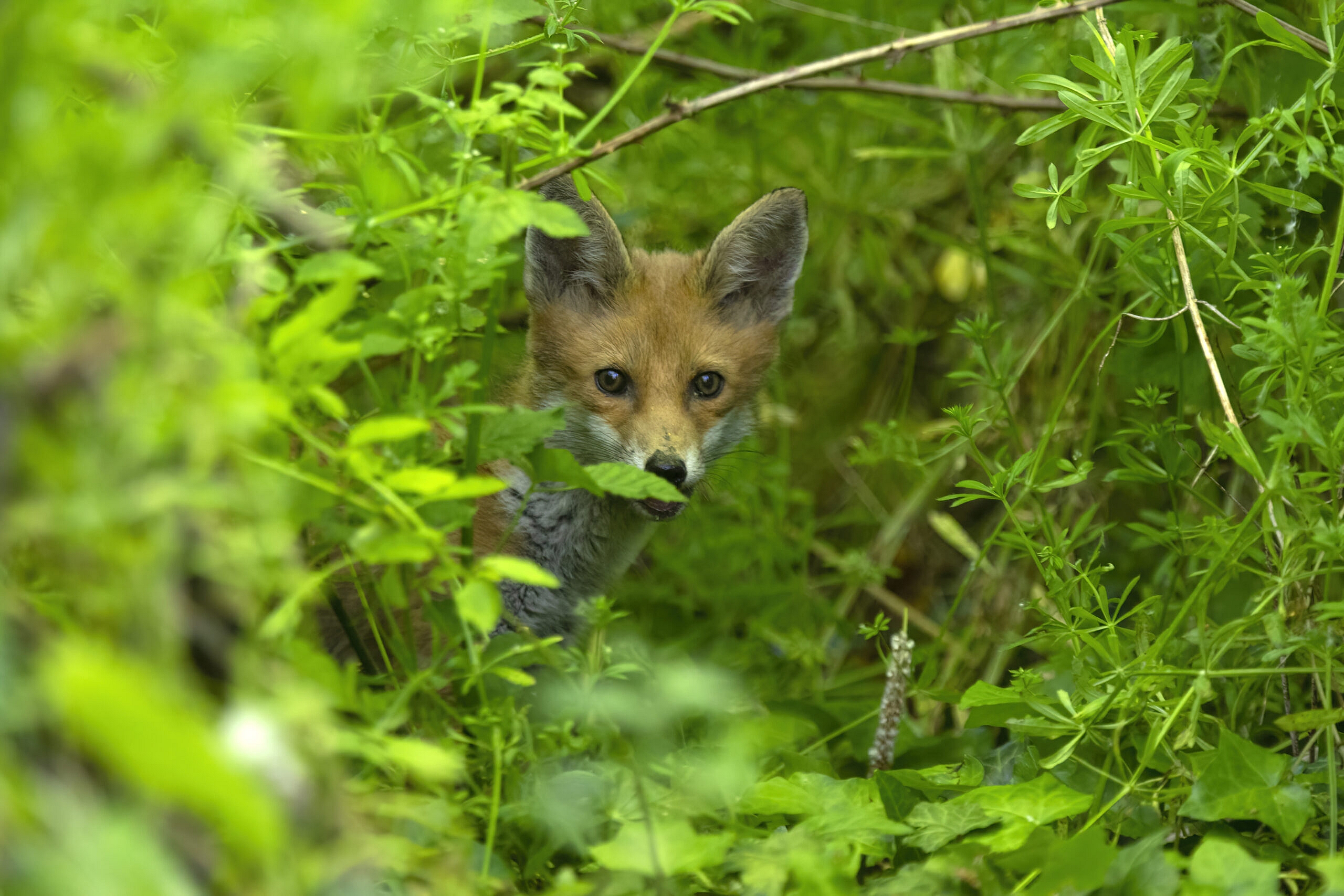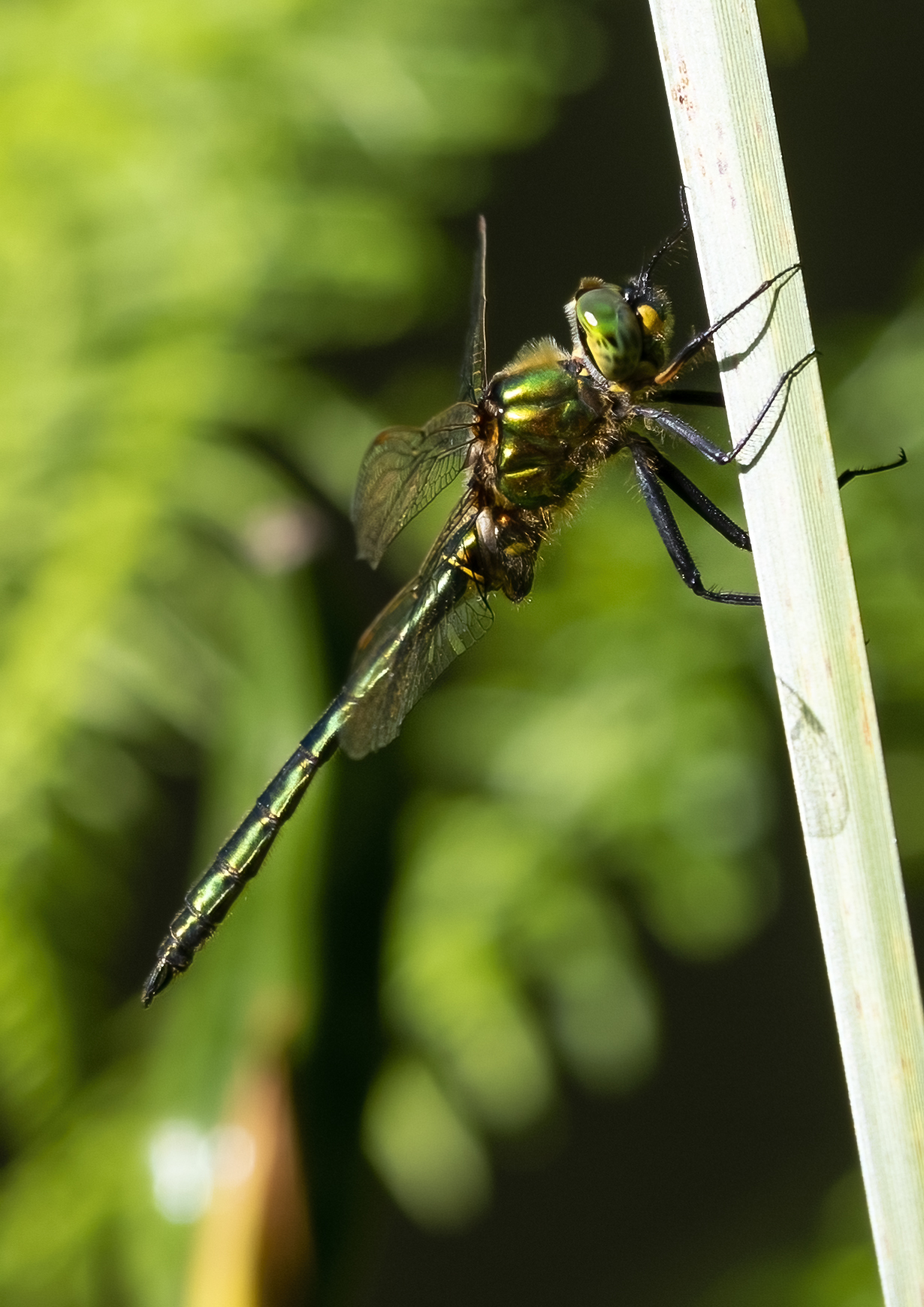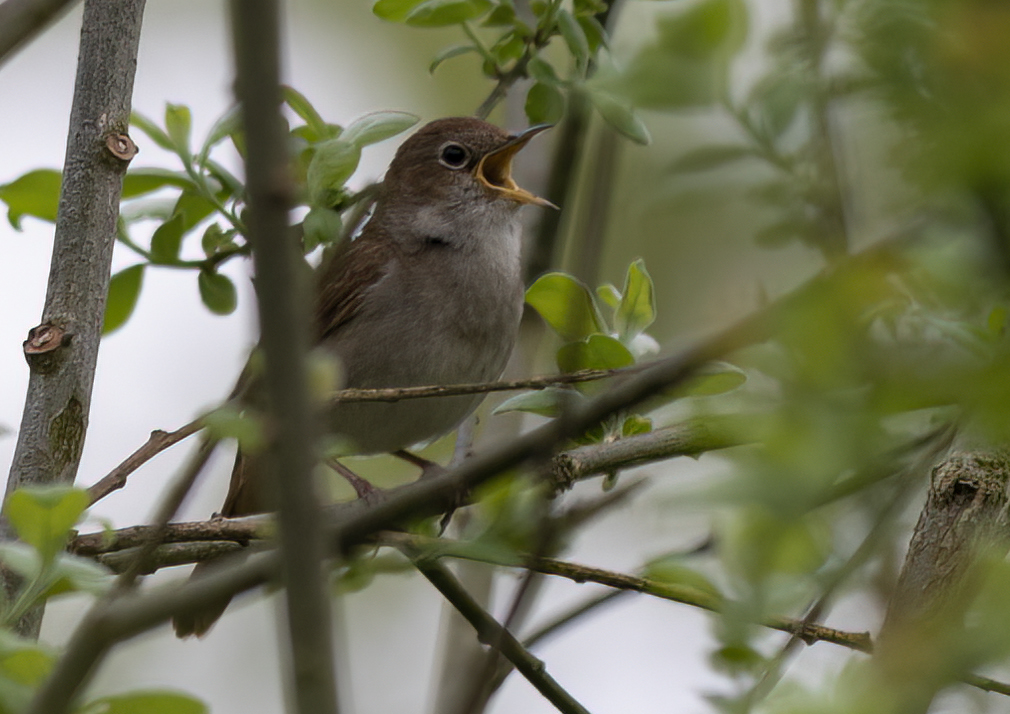I am standing in a meadow, far from the noise of traffic and people, and in the breeze the tall willows that border the field flicker and clatter their leaves for me, the sound of a distant waterfall where there is no water. Two branches of beech, grown too closely together, bang an erratic accompaniment to the steady bagpipe drone of hoverflies visiting the early blackberries. The soft heads of the grasses, the timothy and Yorkshire fog, whisper to each other as the wind ruffles them. But there is another sound that is louder than all of them. I am a giant towering over a fervent landscape full of the constant susurration of crickets and grasshoppers. Slightly delayed by the poor weather this summer, mating season is in full swing, and the grasses abound with singing males.
Shy friends, they fade into silence when I approach, so that I walk in a bubble of quiet amidst a sea of hissing and scratching. But then a stalk near my foot quivers as something large lands on it. It was a jump, not a flight, and I kneel to see a Roesel’s bush cricket. It’s a male, resplendent in green and yellow-spotted livery. Like almost all Roesel’s, he is short-winged and flightless, and makes his slow, steady way down a stem of grass like a vertical tightrope-walker, his objective a male dark bush cricket sitting on a leaf below. They meet, and their encounter is delicate, tentative and brief: a flick of their absurdly long antennae, and both realise that a mistake has been made. The dark bush-cricket remains unmoved, while the Roesel’s retreats back up a nearby stalk to try again. It will probably succeed, as Roesel’s are on the march, spreading steadily out from the southeast, already reaching North Yorkshire and the west of Wales. In the nearby grasses, hundreds of others continue to call, so I sit still in the sun and for a time enjoy the almost deafening quiet of the countryside.





Social Profiles